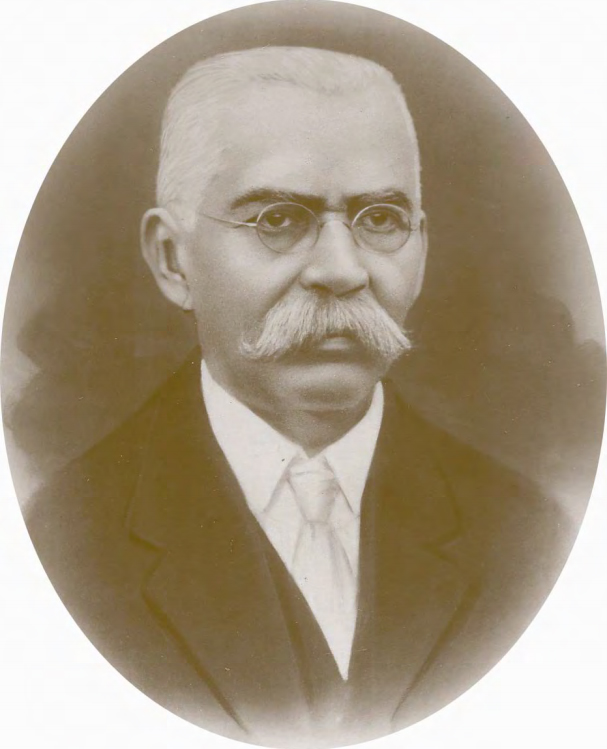
Ioan G. Bibicescu,
Deputy-governor and Governor of the NBR
(1914 – 1921)
(NBR Archives photo collection)
Triggered by the Sarajevo assassination (15/28 June 1914), World War One or the Great War ended on 29 October/11 November 1918. The war pitted the two political and military alliances: the Allied Powers (Great Britain, France and Russia) and the Central Powers (Germany and Austria-Hungary). In the four-and-a-half-year period, the war embroiled not only a large number of European countries, but also non-European nations, primarily the US and Japan, as well as the overseas territories of the British Empire. Thus, the Great War was, in fact, the first global war.

The NBR Palace in Lipscani Street
(NBR Archives photo collection)
Bound to the Central Powers by a secret alliance treaty, Romania retained its neutrality in the first two years of warfare. After signing the alliance with the Allied Powers, Romania declared war on Austria-Hungary on 14 August 1916 and the Romanian troops crossed the Carpathians and entered what was to become the War of Reunification of Romanians. The National Bank of Romania played a major part as a major institution in those trying times facing the Romanian people.
Unlike all previous armed conflicts, World War One was waged with the weapons of the industrial age, entailing tremendous costs. For that reason, the governments of the countries that sent their armies to frontlines were supported by their central banks in those years. The task was fully undertaken by the National Bank of Romania, for which the war started even in the summer of 1914, when the government asked for financial support that could be found nowhere else “but at the Bank”, according to Emil Costinescu, the then Minister of Finance.

Victor Slăvescu, economist, author of the
History of the National Bank of Romania
(NBR Archives photo collection)
As a matter of fact, recalling those years, Governor Ioan G. Bibicescu wrote about “the challenging circumstances, beyond anyone’s imagination”. The National Bank of Romania undertook a number of actions that contributed to the resistance of the Romanian nation, but also showed the difficulties a major institution might face:
- granting loans to the Romanian government to cover war expenses;
- relocating the Bank’s headquarters to Iași, setting up in Bucharest a Delegation with limited tasks (November 1916 - November 1918), and the seizure of the Bank’s head office in 25 Lipscani Street by the German Military Administration;
- shipping the metal stock of the currency issue, also referred to as the gold treasure, first to Iași, then to Moscow;
- hoarding of coins, inflation, suspension of leu convertibility and issuance of occupation lei;
- sending more than half of the Bank’s employees in combat, of whom 21 paid the supreme sacrifice;
- supporting charity actions; and
- providing assistance to the Romanians in Bessarabia, Bukovina, Transylvania and Banat participating in the achievement of the Union in 1918.
As Victor Slăvescu concluded, “the 1914-1918 period is, of course, and will remain one-of-a-kind in the history of the National Bank, as the latter went through all sorts of situations, grappled with innumerable dangers, and stood, together with the whole country, on the brink of an unmendable disaster, and came only after long years of incommensurable efforts to experience the immense happiness felt by the entire nation in the autumn of 1918.”